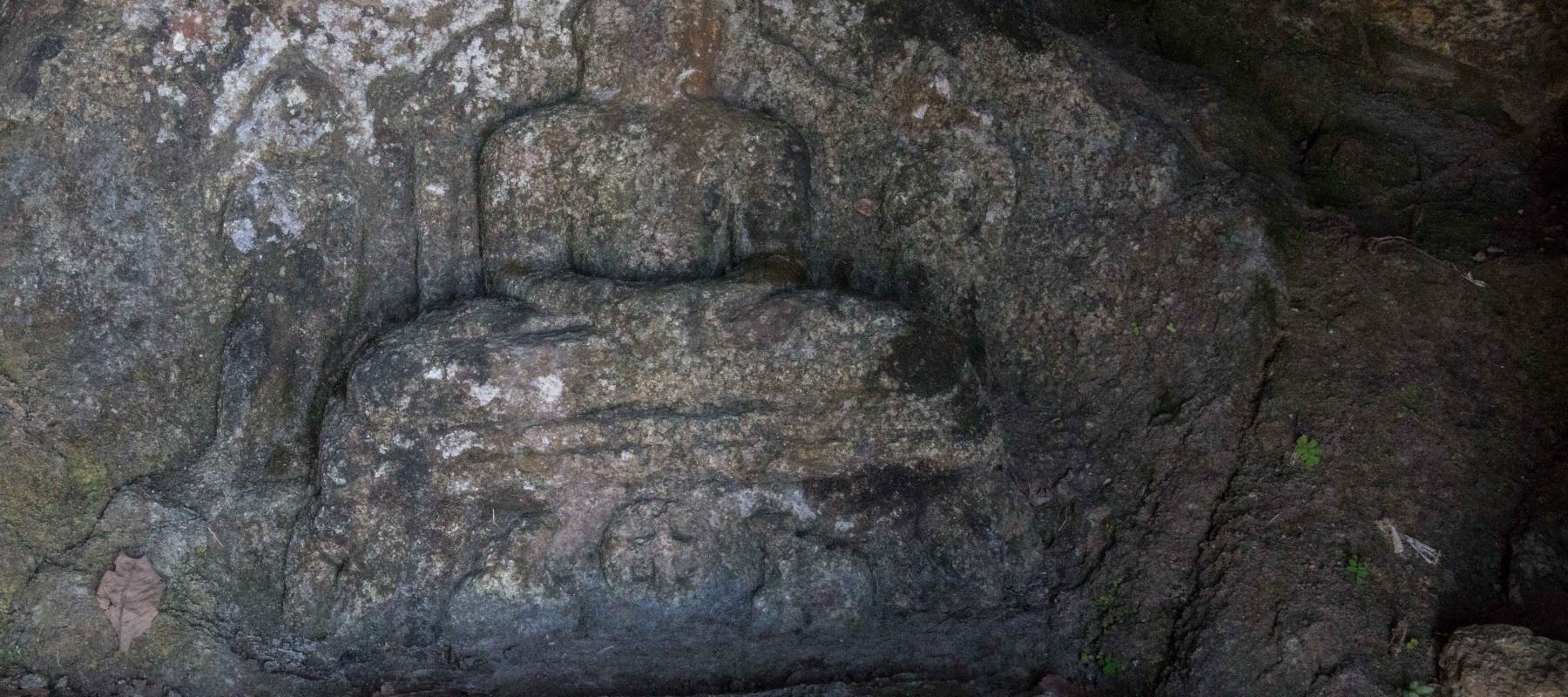Surya Pahar, 130 kilometers from Guwahati city, Assam, bridges a gap of over 2000 years of history of Northeastern India. A stone throw from the majestic Brahmaputra river, and unknown to the prying eyes of archaeologists until 1960, the land hid an epoch beneath its heart. Surya means Sun and Pahar means Hill—the nomenclature suggests this site was perhaps a place of worship of the Sun God. Spread out over 54 acres of land, the area continues to baffle archaeologists. A series of excavations have revealed a stunning past: The area was a confluence of three faiths—Buddhism, Jainism, and Hinduism—in different periods. How these three religions ended up at the same place is still a mystery. Hiuen Tsang, the Chinese traveler who had visited the ancient city of Kamarupa, mentioned nothing about the place. Sculptures, stupas, stone ruins, and exalted folklores are strewn across the slopes and foothills of Surya Pahar Upon entry, towards the left, lies an ancient pond and the newest excavation (2001): a Nagara-style stone temple complex in panchayatana layout (9th-12th Century B.C.E). Inside the complex, a circular panel carved on a stone slab was discovered with twelve forms of Sun God sculpted on it. A few steps towards North, one gets to see the largest monolithic votive stupas (Colossal Stupa) in Surya Pahar. The dome of the stupa has a necklace carved around it, while the base, medhi, has beautiful rose petals chiseled symmetrically. From the stupa, a road leads towards a hill where there are two Jain rock shelters, each at different heights. The first shelter has an image of the first Jain Tirthankara, Rishabanatha, and the twenty-second, Neminatha, in standing positions; the second shelter has a seated image of Rishabanatha sculpted on it.
On the other side of the Surya Pahar, a series of sculpted Brahmanical figures, rock-cut caverns, and granite-cut stupas (pre-Christian era) adorn the landscape. One of those figures is the stunning twelve-armed sculpture of Viswarupam Vishnu. According to the local legends, sculptures are impressions made by the Gods, not humans, who had visited the place. Beneath the Vishnu sculpture, there are eight different images of Vishnu, Shiva, and Hari-Hara in Samapada-sthanika (straight pose), carved on two separate boulders. The area is also scattered with rock-cut shiva-lingams of various sizes. Ask any local, and they will tell you there are 99,999 lingams around Surya Pahar. (An unauthenticated claim but there are surely hundreds of them.
Towards North-East, concealed by fallen leaves of teak, one can see an excavated temple complex built of burnt bricks (pre-Ahoms) and black votive stupas cut out from massive granite boulders. A few of them have eroded, but most still stand the test of time. Apart from its rich archaeological heritage, Surya Pahar reveals two important facts: one, the significance of the Brahmaputra river in trade and amalgamation of different faiths, and second, the secular vibe that the area exhibits.

